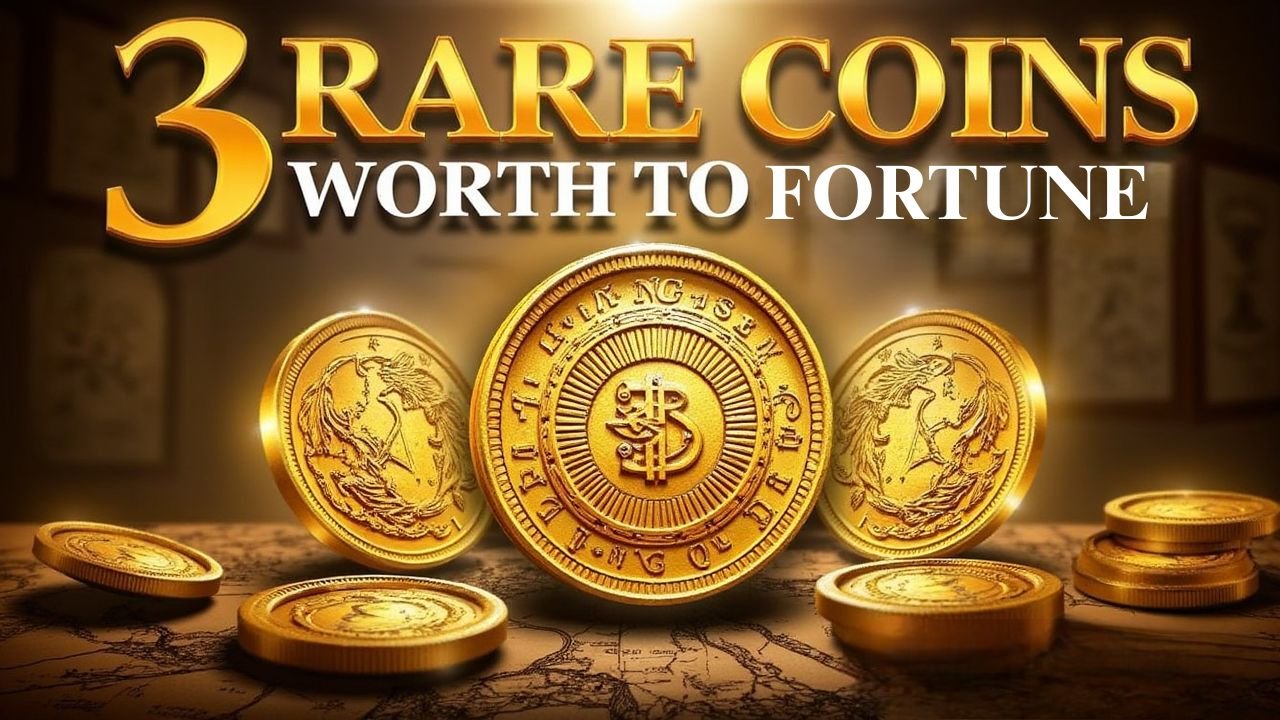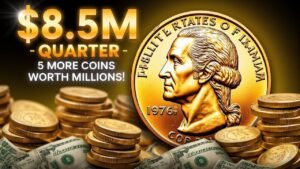Have you ever questioned if the coins rattling around on your drawer, piggy financial institution, or wallet might be worth greater than face price? For creditors, history fanatics, and even casual coin holders, some uncommon cash may want to suggest a life-changing payday.
While maximum cash are common and only preserve sentimental or nominal cost, a choose few are enormously rare, and collectors are willing to pay heaps—even tens of millions for them. Below are three rare coins which have fetched incredible quantities—and also you just might have one mendacity around.
1933 Saint-Gaudens Double Eagle

The Saint-Gaudens Double Eagle of 1933 is one of the maximum popular and costly coins in American history. It became meant to be a $20 gold piece, but nearly all of them were melted down prior to their being launched.
Few survived the government’s devastation, and they’ve become legendary among collectors. One sold for more than $7 million in 2002. Another recently sold for a jaw-dropping $18.9 million. If you ever find one of these in a collection, you might be holding a life-altering piece of gold.
1794 Flowing Hair Silver Dollar

The 1794 Flowing Hair Silver Dollar is the first silver dollar minted by the United States Mint. It has Lady Liberty on one side with flowing hair—hence the name—and an eagle on the reverse.
Few of them are in decent shape. In 2013, one fetched more than $10 million, a record at the time for a coin sold. Because it’s so connected to early American history, it’s a cherished item for serious collectors.
1913 Liberty Head Nickel

The 1913 Liberty Head Nickel is one of the most intriguing coins available. By law, it shouldn’t even exist. Just five were produced, and they were never cleared for general distribution. Yet they’re now among the world’s most desirable coins.
In 2018, one of these nickels was sold for more than $4 million. Their history, scarcity, and intrigue make them extremely sought after. If you somehow possess one, congratulations—you’ve hit numismatic gold.
How To Check The Rare Coins
So, how do you know whether you’re sitting on one of these fortune-coining coins?
Here are a few steps to help you determine:
| Step | What to Do |
|---|---|
| Check the date | Look at the year on your coin—rare dates stand out. |
| Examine the mintmark | Small letters like “D,” “S,” or “P” matter. |
| Look up the design | Compare with pictures of known rare coins. |
| Use online databases | Sites like PCGS or NGC offer coin info and photos. |
| Visit a coin appraiser | Professional help can identify rare pieces. |
| Get certified | A grading service can verify and grade your coin. |
Don’t take online hearsay—some coins that appear rare may simply be worn down or incorrectly identified. Always consult a professional second opinion.
Final Thought
You never know what’s lurking in a dusty coin jar or inherited stash. With the proper discovery, your run-of-the-mill pocket exchange might become a multimillion-dollar providence. The 1933 Double Eagle, 1794 Flowing Hair Dollar, and 1913 Liberty Head Nickel display that on occasion a small coin can yield a huge marvel. So earlier than you toss that penny or sector aside, take a 2d appearance. You might be maintaining a rare coin really worth heaps—or even a fortune.
FAQ’s
How valuable is the 1933 Double Eagle?
It these days sold for more than $18 million at public sale.
How do I determine if I have a rare coin?
Look at the date, design, and obtain expert authentication.
Should I have my coin graded?
Yes, certification establishes authenticity and value.


